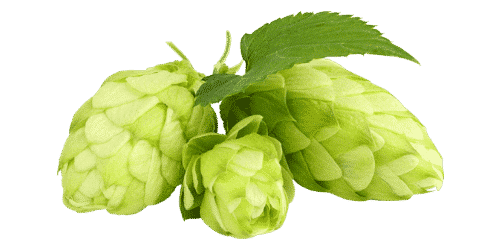
Origin
Originating in the northern hemisphere, hops is an ingredient used in producing a variety of beers However, it has also been recognised since the Middle Ages for its numerous benefits for the body. Introduced in France in the 12th century, hops is today cultivated almost everywhere throughout the world, particularly in northern Europe and particularly in Germany where it is used by breweries for producing beer.
Did you know?
It was once said that slipping hops cones under your pillow at night would aid sleep, hence its name “herbal pillow”,
Characteristics
Hops is a climbing perennial plant which has a voluble stem and rough palmate green leaves. It can grow up to 10 metres in height. The female flowers and the male flowers are separated on the hops. The female flowers are grouped in pairs on a bract. When the bracts overlap, they create what are known as the cones.
Flowering and harvesting
Hops prefers limestone soils and cool ground which allows its branches to develop correctly. The plant also also needs heat to survive. The cones are harvested in September when they are ripe. Yellowish in colour, they have an aromatic and bitter flavour. Once dried, they are used in phytotherapy.
Benefits
The hops cones naturally contain flavonoïds. They contain a volatile essential oil which gives them their aromatic flavour, as well as tannins and amino acids.1
Hops helps to:
- Promote sleep1
Hops promotes relaxation as it relaxes the nervous system to promote sleep. It helps therefore to reduce nocturnal awakenings.
- Improve comfort for women during menopause1
Hops has the capacity to calm the adverse effects of the menopause. It helps women therefore to cope with the revealing symptoms associated with the menopause, such as hot flushes, sweating and restlessness.
1http://www.guide-phytosante.org/calmant-sedatif/houblon/houblon-description-plante.html
Plant-based health: 200 plants with health benefits Reader’s Digest selection, 2003. 352 p. ISBN 2-7098-1413-7
https://www.aujardin.info/plantes/houblon.php
https://www.rustica.fr/plantes-grimpantes/houblon-dore-humulus-lupulus-aureus,61.html
